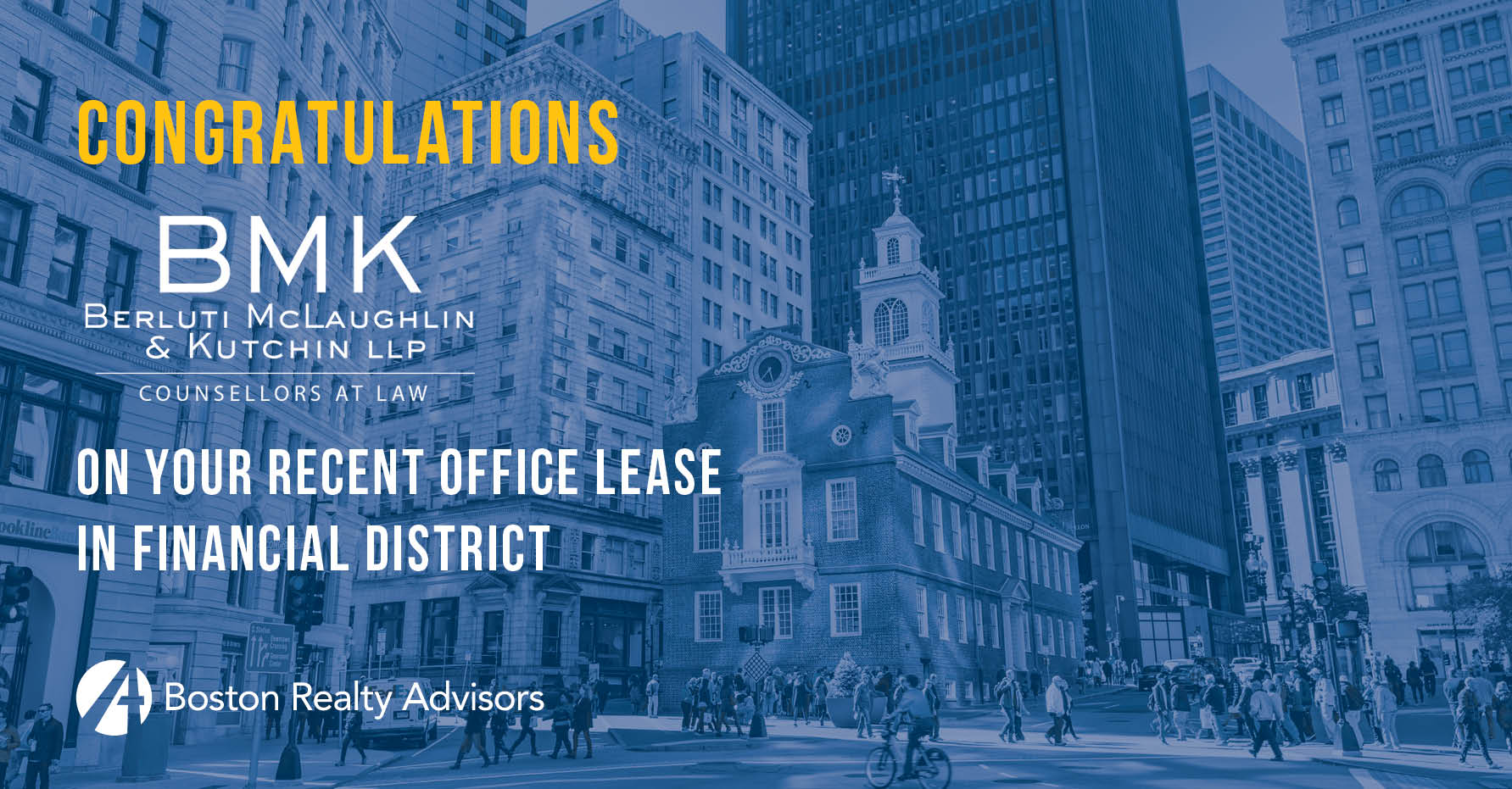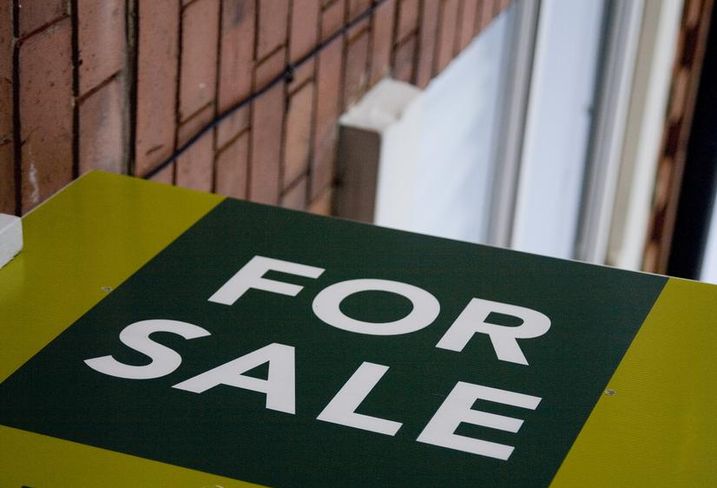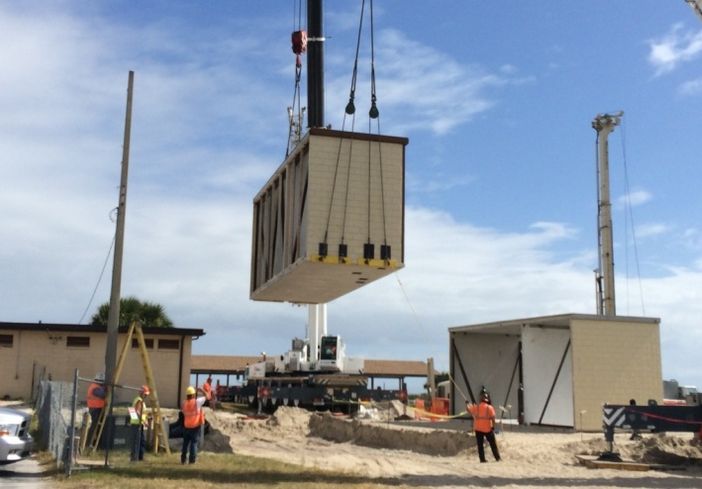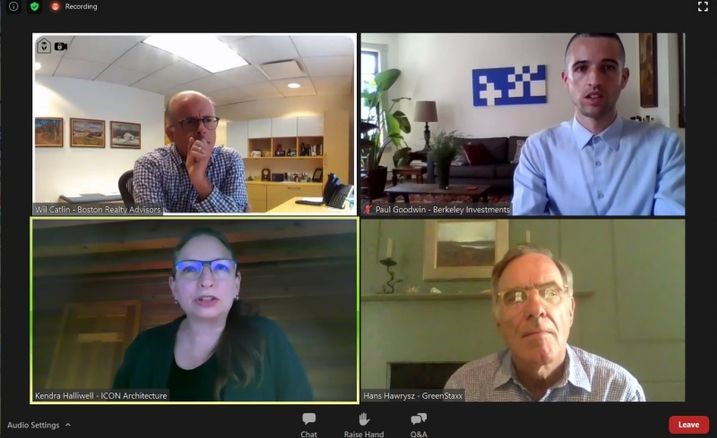
Category Archives: Boston Real Estate
0 CRES Stats Report | Week Ending March 19, 2021
CRES Stats Report | Week Ending March 19, 2021
- Keeping with the trend 30 spaces hit the market as available in the subject area in the last 7 days, equating to ~232,000 SF, which is on the higher end of the curve of recent weekly additions;
- 13 spaces (over 1,000 SF) came off the market equating to ~116,000 SF, consistent with recent history;
- Checking in on Harvard SQ/Mid-Cambridge, a 2.5MM SF market, there is 280ksf direct available and 350ksf of sublease space available;
- Availability stayed in downtown stayed just under 17MM SF at 16,700,000 SF.
0 CRES Stats Report | Week Ending January 29th
CRES Stats | Week Ending 1.29.21 : (sublease & direct – in all cases temp space excluded) from Mass Ave to the Seaport, South End to North Station.
- 62 spaces hit the market as available in the subject area in the last 14 days, equating to ~235,000 SF;
- 63 spaces (over 1,000 SF) came off the market equating to ~144,000 SF;
- Much of the space was new sublets coming on and many sublets converting to direct space;
- What is the market that we’re tracking noted above? It’s about 62MM square feet;
- The current availability rate is ~15.8MM SF, or about 14.3% total availability.
0 CRES Stats Report | Week Ending December 11
CRES Stats Report | Week Ending December 11
- 27 spaces hit the market as available in the subject area in the last 7 days, equating to 226,000 SF which is above the recent range;
- 21 spaces (over 1,000 SF) came off the market equating to 174,000 SF;
- The availability rate in Boston ticked up again slightly this week at 15,600,000 SF;
- The question now is when the availability rate will “top out”, with the effects of the COVID therapies versus leases ending (and those tenants renewing, downsizing, going virtual or relocating out of the downtown)?
0 Brokerage CEO Advises Industry to Make the Technological Leap

By Connect Media | September 4, 2020
Boston Realty Advisors’ Jason Weissman says the future is now, and brokers in both the residential and commercial space need to be ready for it. “Silicon Valley is catching up to the real estate industry,” he writes in Fast Company.
He notes that over the past decade, more than $30 billion has poured into the proptech space, “a new generation of startups at the intersection of property and technology.
As the owner of the largest independent real estate brokerage and advisory firm in Massachusetts, I have been studying the brokerage industry for 25 years,” writes Weissman. “I’ve seen aspiring disruptors come and go. This time is different.”
Brokers and agents will need to make the technological leap, Weissman writes. In order to do so, “they need to recognize that every real estate transaction will ultimately begin and end online.
“Today, unicorns such as Zillow and Redfin are redefining and leading the consumer experience of search by creating new platforms for buying, selling, and renting homes,” he continues. “These tech companies are a wake-up call for real estate agents to reinvent or die.”
However, Weissman says it’s not all doom and gloom. “While proptech will ultimately bring all listings online, real estate agents are still critical for the most important part of the purchasing process: advisory service,” he writes. “If all politics is local, that is doubly true for real estate. Even the most tech savvy buyer or seller can benefit from the counsel of someone with market knowledge about individual neighborhoods.”
Further, Wissman observes, “The pivot from conventional practice to digital efficiency has created new business opportunities for real estate agents with sharp analytical skills who understand how to translate data into palatable information. While technology narrows the gap, proptech is still in its infancy, with a lot yet to learn.”
That being the case, Weissman cautions, “The real estate agents and brokerages who survive and thrive in the coming crunch will be those who embrace technology, not fight it.”
0 Coronavirus Pauses Luxe Condo Sales In Boston, But Developers Anticipate Post-Pandemic Surge

By Dees Stribling | Bisnow | August 12, 2020
Like a lot of other real estate activity, the coronavirus pandemic has represented a pause for the luxury condo market in greater Boston. But there are signs that the pause won’t be a long one.
After a period of adjustment to the new realities of the pandemic, buyers who put off buying upper-end properties will soon be back in the market, developers said on Bisnow’s Boston Luxury Condo Update webinar. Demand will rise, but supply won’t rise as far, because it never has in Boston, whose entitlement and zoning process is protracted.
“There are not a lot of silver linings in this pandemic, but it has created a surge in the Massachusetts residential market, both in the traditional single-family bedroom communities in Boston, but also in the Cape and islands,” Boston Realty Advisors Senior Partner Jason Weissman said.
For the moment, that might mean people are looking to live outside the city, but in terms of the ecosystem of Boston residential properties, activity near Boston will ultimately be good for the city market, he said.
“I don’t look at it as losing people from Boston, but as more liquidity in the market post-pandemic,” Weissman said, adding that in many Massachusetts communities, there is less than one month inventory of single-family homes.
There are also hints that, however much cachet upmarket single-family suburban houses might have for the moment (because it is easier to distance oneself in them), buyers are still interested in luxe urban properties.
In June, just one Boston residence listed for over $5M took an offer, while in July, five properties at that price range found buyers, according to a report by David Bates, a Boston Realtor and specialist in the luxury market.
Of the six accepted offers for those months, four were in Beacon Hill, one was in Back Bay and one was in the South End, and they were all new construction or recent rehabs, Bates noted.
When the luxury market does make its comeback, its fundamentals will be strong, because there is a lack of inventory. The amount of condo inventory varies significantly between city neighborhoods, according to Boston Realty Advisors data. In places like East Boston, the South End and Allston/Brighton, there is less than three months’ supply. Beacon Hill has about five-and-a-half months’ supply, and Back Bay has more than six months.
“What that means is, demand will quickly catch up to the supply, once people begin to come back,” Weissman said.
“We see that people are still interested in buying and leasing,” HYM Investment Group Senior Development Manager Julie Livingston said. “We’re going through a pause right now, but people are still craving a return to some normalcy.”
In partnership with National Real Estate Advisors, HYM is developing The Sudbury, which is the first residential building in Bulfinch Crossing in Downtown Boston. It includes 55 condos on its top 11 floors and 368 rental units on the lower floors.
Bulfinch Crossing is the 2.9M SF redevelopment of the Government Center garage. Part of the project involves taking down half of the garage and wrapping three new high-rise buildings around the remainder. One of those buildings is The Sudbury.
One reason for the strong interest, Livingston said, is that people still want to be in the city. The Sudbury has a walkability score of 99, but also quick connections to transit.
“For the sales that are happening, prices aren’t coming down,” Livingston said. “We’re targeting between $3.5M and $6M, at over $2K/SF, and we feel confident in the market.”
Community will be an important concept for downtowns after COVID-19 subsides, and Raffles Boston Back Bay Hotel & Residences will take advantage of that, said Noannet Group founder Jordan Warshaw, whose company is developing the new condo/hotel tower with Cain International.
For example, he said, there will be 16 intimate spaces in the building for residents and hotel guests to meet, a design that will cater to the human need for interaction in smaller settings. That is something the pandemic will not destroy.
“Has there been a pause because of COVID? Have suburban sales taken off? Yes,” Warshaw said. “But people are desperate for community, they live for community, and the place to get it is cities. You can’t change the massive demographic phenomenon of people moving toward community.”
Raffles is an international luxury hospitality brand founded in Singapore, with 14 properties worldwide now. When 33-story Boston Raffles opens in 2022, it will be the first North American location for the brand, which is owned by Accor. The tower will include 147 hotel rooms and 146 residences.
“Boston isn’t a newly developed, cookie-cutter type city, and Raffles is the furthest thing in the luxury realm from a cookie-cutter-type brand,” he said.
Cain International CEO Jonathan Goldstein said that his company is a believer in gateway cities, such as Boston, and in the luxury space. There is an undersupply of luxury space in Boston, he said.
“We have a huge amount of confidence we’re in the right position, notwithstanding the pandemic,” Goldstein said. “Whilst we might, for the next six or 12 or even 18 months, be doubting ourselves or our cities, ultimately human talent will want to be in metropolitan cities, and will want the luxury and entertainment and business opportunities.”
0 Boston Luxury Condo Update

Boston luxury condos have always been in high demand, with expansions from the inner city to the Seaport. Like many markets across the country, tenant activity and demands have evolved and the development process was halted.
What communication with tenants is being had? Are developers noticing that tenant design demands are changing? Will rentals numbers in the condo market grow? Which projects are changing the condo landscape despite the coronavirus and which Boston submarkets are seeing buying activity?
Join Bisnow as we connect with Noannet Group Founder Jordan Warshaw, HYM Investment Group Senior Development Manager Julie Livingstone and Cain International CEO Jonathan Goldstein for a discussion on how the Boston condo market has evolved and what that evolution means for the market moving forward.
WEBINAR SUMMARY
- Are luxury condos still a viable investment option given the current state of the market?
- In traditionally strong submarkets (Seaport, Back Bay, etc) tenant demand remains strong. How is inventory in the other submarkets fairing?
- Are condos trading right now? If so, are they discounted or in line with pre-pandemic numbers?
- Have design expectations from tenants for developments underway changed?
- Will condos as leasing opportunities be explored given the current buying landscape?
Watch webinar HERE.
0 Modular Construction Acolytes Think A Rebrand Is In Order
By
New materials and digital technology are making modular construction a more efficient construction option than before, but there are still obstacles to its growth and acceptance. One of those is the term “modular” itself. The construction method needs a rebrand, experts say, to ditch some old and incorrect connotations.

“With the term modular, there are preconceptions of a double-wide going down a highway: less than attractive, subpar housing,” CON Architecture Practice + Design Team Leader Kendra Halliwell said on Bisnow’s Modular Housing for the Future webinar last week. “We’d like to get away from that with a rebranding. Perhaps saying ‘off-site’ or ‘volumetric construction.’ Anything that can be built in a factory counts as off-site.”
Moreover, “modular” barely does justice to how sophisticated the process can be, she said. In off-site construction, new digital tech is being applied to different facets, such as the design of the off-site components — the modules, the logistics of their delivery to the site, and the coordination of putting them together on site.
The acceptance of modular construction in the United States is still sluggish, even as it has been accepted in other parts of the world, such as Japan and Scandinavia. But with construction labor in short supply and the need for housing at all-time highs in Boston, the time and cost efficiencies offered by digitally enhanced modular construction, or whatever it could be called in the future, would help overcome those problems.
Modular construction can reduce construction costs as much as 20% and project time as much as 50%, compared to standard construction methods, according to a 2019 McKinsey & Co. report, “Modular Construction: From Projects to Products,” which also serves as a guide to the role that modular can play in the future of construction.
The technique has caught on in other parts of the world, but a misperception of low quality still lingers around modular — falsely, the report says.
“The construction industry as we know it now hasn’t changed in hundreds of years,” Halliwell said. “It’s incredibly inefficient. Off-site construction is a way to build more efficiently. We could take care of this housing shortage if we could disrupt this industry, and change the way we work and the way we build.”

The other speakers joining Halliwell on the Boston-centric webinar cautioned that off-site construction isn’t a panacea for the ills plaguing construction in Boston or many other American cities, but rather a useful tool to improve the industry.
“Off-site construction is not necessarily a silver bullet for costs, schedules or supply considerations,” Berkeley Investments Development Project Manager Paul Goodwin said. “Still, it’s something that has a lot of promise to address a lot of different issues.”
Building components in a factory instead of on an open-air construction site helps control costs and schedules and can make a more sustainable and consistent product, he said.
“Can it do all of those things for all projects?” Goodwin said. “No. It needs to be assessed on its merits on a project-by-project basis.”
With off-site construction, the opportunity exists to apply the principles of mass production to the Boston housing industry, GreenStaxx Director Hans Hawrysz said. The key principles for going forward with the technique are standardized design, integrated production, replication and continuous improvement.
“Buildings are no longer constructed on-site,” he said. “More and more, they are assembled. The more you do it, the better you get, and the more productive you get. It reduces cost and increases profitability.”
The quality of off-site manufacturing of construction components is also better than that of traditional construction, Hawrysz said. Quality control and inspections are much easier, and the process is also more sustainable.
The off-site process is suitable for more than just low-rise properties, Goodwin said. High-rise structures built using the process exist, made of both steel and wood. The tallest modular building in the country was built in Brooklyn by Forest City, before it was acquired by Brookfield. The tallest in the world, two 40-story apartment buildings in Singapore, opened last year.
“We’re looking at a project now that’s a steel-and-concrete high-rise,” Halliwell said. “Each project is a little different.”
The process also needs an integrated team to make it effective, Hawrysz said. Since it involves a manufacturing process, the construction team needs a lot more coordination upfront.
“That also eliminates some of the rework down the road,” he said. “Much of rework is caused by imprecise documentation, so everybody needs to get together upfront.”
As many possible advantages as off-site represent, there are also challenges beyond the connotations of calling it modular, the speakers said. From the perspective of an owner, for example, there is some risk of having to rework an off-site component, Goodwin said.
“If you aren’t confident that things are designed and constructed the way that they are intended to be, then on-site rework is a real risk — and more laborious and later in the process,” he said.
Another challenge for the off-site process is while it can be much more efficient in the time it takes to build, getting access to the manufactured materials in a timely way isn’t always a given, Hawrysz said. That is especially a consideration in New England, where building material supply is constrained compared to other parts of the country.
0 Microsoft stores in Mass. to permanently close
Microsoft is stepping out of the retail game with plans to close its stores.
Microsoft (NASDAQ: MSFT) lists a total of 72 stores in the United States, with three mall locations in Massachusetts: Boston’s Prudential Center, the Burlington Mall and the Natick Mall.
By Drew Hanson | Boston Business Journal | June 26, 2020

Microsoft Corp. is closing its physical retail stores around the world.
The Redmond, Washington, technology company said Friday it would permanently close all of its stores, with the exception of locations in New York City, London, Sydney and its hometown. Those stores will be reconfigured as “experience centers.”
Microsoft (NASDAQ: MSFT) lists a total of 72 stores in the United States, with three mall locations in Massachusetts: Boston’s Prudential Center, the Burlington Mall and the Natick Mall.
The company had not reopened any of its Microsoft Store locations since the onset of the Covid-19 pandemic in March. Retail employees will move into roles serving private consumers, small businesses, education and enterprise customers, according to Microsoft’s announcement. They will work remotely or out of corporate facilities.
With the closure of the stores, Microsoft said there would be a renewed focus on online sales.
“We deliberately built teams with unique backgrounds and skills that could serve customers from anywhere. The evolution of our workforce ensured we could continue to serve customers of all sizes when they needed us most, working remotely these last months,” Microsoft Corporate Vice President David Porter said in a statement. “Speaking over 120 languages, their diversity reflects the many communities we serve. Our commitment to growing and developing careers from this talent pool is stronger than ever.”
The permanent closures will result in a pretax charge of about $450 million, according to Microsoft. It will be recorded in the current quarter, which ends June 30.
0 The Future of Office Amidst Covid-19
Moderated by Wil Catlin (Boston Realty Advisors) with a star-studded panel, including Michael Maturo (RXR Realty); Matthew Friedman (Rockwood Capital); Arthur Jones (Principal Real Estate Investors); and Robert Deckey (Invesco US)
ABOUT THE VIRTUAL EVENT
iGlobal Forum Live introduces a brand-new virtual event, providing you with key insights into the Offices market.
This 1-hour discussion is the perfect opportunity to delve into this key commercial real estate sector with industry leaders, both from asset management and acquisition standpoints, enabling you to get solutions you can take back and use in real time.
Key topics include:
- Flex-space and Space-As-A-Service feel highly relevant, yet how can they survive new health requirements?
- Will tenants downsize and relocate to minimize costs? Or will they create grand offices that are branding exercises to draw people back together?
- What are asset management teams doing to protect portfolios in this C-19 environment?
- What solutions are available for elevators?
- How much will operating costs increase?
- How are sector benchmarks or metrics shifting to meet the new Covid-19 reality?
- In future, will an employer’s location matter less, and if so, what does that mean for the office sector?
Register HERE.

